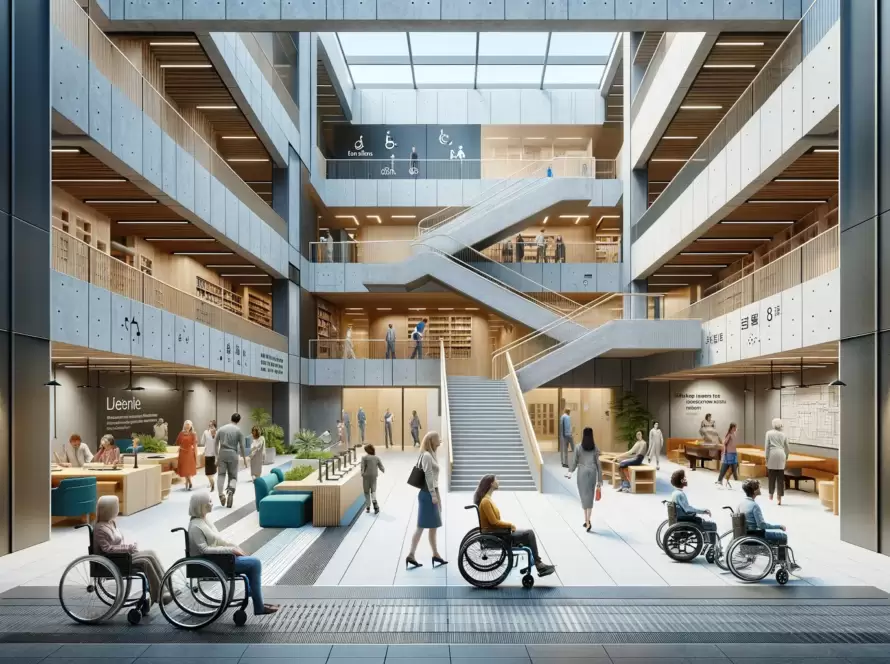
Table of Contents
- Introduction:
- Holistic Development:
- Enhanced Design Proficiency:
- Specialized Focus Areas:
- Experiential Learning Opportunities:
- Cultivation of Professional Networks:
- Preparation for Licensure and Accreditation:
- Cultivation of Leadership and Entrepreneurial Skills:
- Global Perspectives and Cultural Exchange:
- Conclusion:
Introduction:
Embarking on a journey in the field of architecture is akin to wielding the brush of a master painter, crafting not merely structures but shaping the very landscapes of our lives. In this dynamic realm, the significance of education cannot be overstated. While a traditional four-year program lays the foundation, a five-year architecture program offers an extended canvas for budding architects to refine their skills, delve deeper into specialized areas, and emerge as visionary creators. Let us delve into the manifold benefits awaiting those who choose to traverse the enriching path of a five-year architecture program.
Holistic Development:
A five-year architecture program is a crucible wherein aspiring architects are forged into multidimensional professionals. Beyond the technical proficiency in design principles and structural engineering, students undergo a holistic transformation. They cultivate critical thinking, imbibe interdisciplinary knowledge, and nurture an acute sensitivity to socio-cultural contexts. This comprehensive approach equips architects with the acumen to navigate the complexities of real-world projects with finesse and foresight.
Enhanced Design Proficiency:
Central to the ethos of architecture is the art of design, wherein form seamlessly intertwines with function to create spaces that inspire and endure. Through an extended curriculum, students in a five-year program are afforded ample time to hone their design prowess. They engage in iterative processes, exploring diverse aesthetic paradigms, and honing their conceptualization skills. This prolonged immersion enables them to develop a signature design language, fostering innovation and excellence in their architectural endeavors.
Specialized Focus Areas:
Architecture is a vast tapestry woven with myriad threads of specialization, each offering unique opportunities for exploration and mastery. A five-year program allows students to venture beyond the confines of generalist education and delve into specialized domains. Whether it be sustainable architecture, urban planning, heritage conservation, or digital fabrication, students have the latitude to immerse themselves in areas that resonate with their passions and aspirations. This specialization not only augments their expertise but also enhances their marketability in an increasingly competitive landscape.
Experiential Learning Opportunities:
The essence of architectural education transcends the confines of classroom lectures and theoretical discourse. It finds its true manifestation in the crucible of real-world experiences. A five-year architecture program leverages an extended timeframe to integrate experiential learning opportunities seamlessly into the curriculum. From site visits and internships to collaborative projects with industry partners, students are afforded immersive experiences that bridge the chasm between theory and practice. These experiential learning opportunities not only enrich their academic journey but also foster a deeper understanding of the nuances inherent in architectural practice.
Cultivation of Professional Networks:
In the labyrinthine realm of architecture, the cultivation of professional networks is instrumental in fostering growth and opportunities. A five-year architecture program provides students with an extended timeframe to nurture meaningful connections within the industry. Through internships, workshops, and industry collaborations, students forge bonds with seasoned professionals, mentors, and peers alike. These networks serve as conduits for knowledge exchange, mentorship, and potential avenues for employment upon graduation. Moreover, they lay the foundation for lifelong relationships that enrich both personal and professional spheres.


Preparation for Licensure and Accreditation:
Architectural licensure is the hallmark of professional competency, conferring upon practitioners the legal authority to design and oversee construction projects. A five-year architecture program aligns its curriculum with the requisite knowledge areas and competencies mandated by licensing boards and accreditation bodies. By adhering to rigorous standards and benchmarks, students are meticulously prepared to navigate the licensure process with confidence and proficiency. Additionally, accredited programs instill a sense of credibility and trust in prospective employers, bolstering the employability of graduates in a competitive job market.
Cultivation of Leadership and Entrepreneurial Skills:
The realm of architecture demands not only technical proficiency but also adept leadership and entrepreneurial acumen. A five-year architecture program serves as a crucible for the cultivation of these indispensable skills. Through collaborative projects, studio critiques, and extracurricular initiatives, students assume roles of leadership, learning to articulate their vision, inspire teams, and navigate complex project dynamics. Moreover, the program fosters an entrepreneurial mindset, equipping students with the tools and strategies to translate their creative vision into tangible ventures, be it through independent practice, consultancy, or entrepreneurial ventures.
Global Perspectives and Cultural Exchange:
Architecture is a universal language that transcends geographical boundaries, weaving together diverse cultures, traditions, and perspectives. A five-year architecture program offers students a passport to global engagement and cultural exchange. Through study abroad programs, international collaborations, and cross-cultural initiatives, students gain invaluable insights into diverse architectural traditions, urban contexts, and societal norms. This global perspective not only enriches their design sensibilities but also fosters empathy, tolerance, and cross-cultural understanding, essential attributes for architects navigating an interconnected world.
Conclusion:
In the ever-evolving landscape of architecture, the pursuit of excellence demands not only technical proficiency but also intellectual curiosity, creativity, and a commitment to lifelong learning. A five-year architecture program serves as a crucible wherein aspiring architects are nurtured, challenged, and inspired to transcend the ordinary and envision the extraordinary. Through its extended duration, specialized focus areas, and immersive learning experiences, it equips graduates with the requisite skills, knowledge, and perspective to embark on transformative journeys, shaping the built environment and leaving an indelible imprint on the world. Embrace the enriching odyssey of a five-year architecture program, and unlock the boundless possibilities that await in the realm of architectural innovation and creativity.


